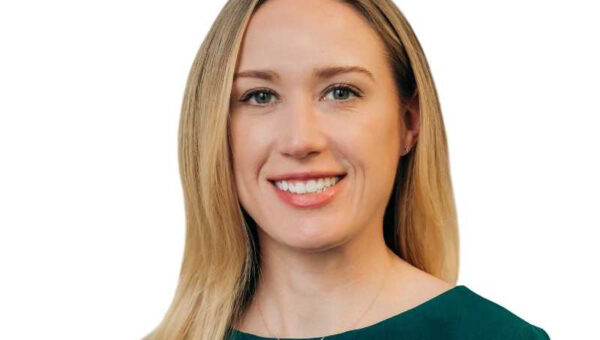
COVID’s Impact on Education and Learning

By Stanley Litow, Professor at Columbia and Duke University
The devastating impact of Covid on our lives has stretched far beyond health issues. Ever since Covid hit us with a body blow in early 2020 we have all watched the datapoints roll out on the number of cases, hospitalizations and deaths that predict how long the Covid crisis and its effect will last. The pandemic has also had a dramatic impact on education and has highlighted inequities in education, as well as health. The future of education calls for bipartisan, innovative solutions and business partnerships.
Declining Graduation Rates and College Enrollment
There were two recent data points that came out, having nothing to do with the public health crisis, that demonstrate that the effect of Covid might be with us a lot longer and perhaps even more seriously than other data points. Last week 26 states released their high school graduation numbers and 20 of the 26 states had a decline in high school graduations. States like Illinois and Oregon declined by 2% in just one year. This is particularly troubling since rates of high school graduation have been on the uptick for decades and this decline is definitely a result of Covid.
In addition, in December we should have all been aghast at the recent data on community college enrollments. This past year our nation’s community colleges, which are the bridge to the middle class and beyond, experienced the largest single year decline in enrollment since enrollment data has been collected. In the Fall of 2019, there were 5.5 million students in public community colleges nationwide; but by Spring of 2021 that number had dropped to 4.5 million. In the state of California alone, the decline exceeds 300,000 students. In New York, both SUNY and CUNY community colleges experienced significant enrollment decline. If this enrollment decline continues there are huge long term economic risks.
The Economic Impact of Declining College Enrollment
These risks are not just for the students themselves, but for all of us. Fewer students with college degrees will mean employers in need of such talent may relocate out of New York and future employment and tax revenues could decline in our City and state. And if fewer educated and skilled workers are available to move into stable higher wage careers, they will most certainly wind up needing support from the social safety net, putting a strain on City and state budgets.
The economic case is very clear: those with a 2-year degree are likely to earn $5,400 more each and every year, compared to those who only have a high school diploma. Over a 20-year period that’s over a $100,000 income gap per student. As the number of students not attending college continues to grow into the millions, the financial loss and economic consequence will be in the tens of billions, predicting a cloudy economic future for decades to come. The solution is to act and act quickly.
States and school districts, including New York, have the opportunity to not only help students catch up on unfinished learning from the pandemic but also tackle long-standing historical inequities in education. Quite properly this issue was flagged by Governor Hochul in her state of the State address where she set a goal to increase SUNY college enrollment significantly by the year 2030, and she put her money where her mouth is by adding funding into the state budget to support that goal.
In addition to increasing funding to raise SUNY enrollment, there are potential solutions, including PTECH programs, that are both data based and likely to unite educators, government and business leadership across the US. These solutions cut across political aisles, especially in New York, and create the potential of removing these threatening storm clouds and instead providing a sunny and bright future toward enrollment increase, not decline. But we will need to act, and act quickly.
The Benefits of PTECH Programs
This year marks the 10th Anniversary of the PTECH program when the doors opened for the first PTECH school in Brooklyn. The PTECH program was an innovative approach, providing dual enrollment in high schools and community colleges in a combined grade 9 to 14 program where largely low-income students and students of color can get their high school diploma and community college degree concurrently. In a decade, the PTECH program has expanded into 13 red and blue states, including New York, New Jersey, Colorado, and Connecticut, as well as Louisiana, Maryland and Texas. These programs have also launched in 28 countries as diverse as Australia, France, Japan, and Taiwan. There are over 300 PTECH schools serving over 100,000 students. Students are enrolled in high school but also once college ready, are jointly enrolled in a partnering community college where they take their college courses as early as grade 10.
But the innovation doesn’t end there. With support of an industry partner, companies like IBM, Thomson Reuters and Corning, students are provided with mentors and paid internships and are first in line for available jobs when they complete the program. Students don’t just take some college courses, they complete a full college degree in a competitive area, like cyber security, biotechnology, and healthcare. In New York the initial PTECH school partnering with IBM provides degrees in both computer science and electromechanical engineering. In Longmont, Colorado a new PTECH school modeled after the one in Newburgh, NY just opened offering an AAS degree in cybersecurity partnering with employers like Comcast and Cisco, and another is soon to open with a degree in BioTech partnering with healthcare industry partners.
These are not just jobs. They are high wage career opportunities. And PTECH schools have completion rates that are 400% higher than the national average, with no student taking expensive non-credit bearing remedial courses. This is an opportunity for businesses to step forward as partners to PTECH programs, to increase opportunities for students, and drive a stronger workforce of the future. While PTECH began in New York City, the City of Dallas has opened a PTECH school within a school in every one of its 18 comprehensive high schools with over 1,000 graduates a year with both high school and college degrees.
Could New York City follow Dallas’ lead and significantly expand PTECH schools across the City? Yes, it could. And because students would be jointly enrolled in a partnering community college, the City and states college enrollment numbers would climb, as would college completions and employment, thus adding to the City’s economic gains post-Covid.
Tax Incentives for Education
In addition to PTECH, there is another opportunity to boost community college enrollments. Under the Cares Act, employers whose employees take college courses while employed, can get a tax incentive up to $5,250 per employee for their college tuition costs, through the year 2025. This means that people in the workforce now, can expand their education and skills, becoming more productive and effective while still employed. And this can all be accomplished with little or no cost to the employer or the employee. Sadly, few employers are aware of, or taking advantage of this opportunity, but were it given visibility by Mayor Adams and business leadership too, it would result in a spike in college enrollment and a workforce whose skills would expand as well. By taking advantage of these tax incentives and providing opportunities to their employees, businesses get a more skilled workforce and employees secure a brighter future.
The Path Forward
Were New York to embrace, promote and increase both the number of students provided a PTECH opportunity and the number of employers promoting and allowing their employees to access the employer tuition tax credit at no cost to them, it would have decidedly positive effects on our city and state. It would lead to a halt in community college enrollment decline, instead spurring a significant college completion gain. But it would not just enroll students, they would complete college and gain high wage jobs, producing economic gain and cost savings—a tremendous win for the future of these students, and New York State.
For New Yorkers and for businesses in New York, this is a path forward out of Covid resulting in new opportunities for all. We need to move forward with all deliberate speed.
Stanley S Litow, Professor at Columbia and Duke University
Innovator in Residence at Duke University
Author, The Challenge for Business and Society: From Risk to Reward
www.stanlitow.com


